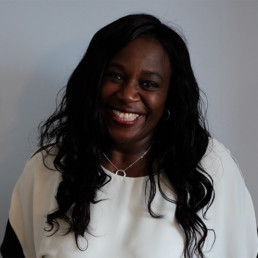
Written by Audrey Pantelis
Audrey Pantelis is an associate coach, consultant and trainer. She is a former Headteacher of a Special Educational Needs and Disabilities school and a current Diversity, Equity and Inclusion consultant and leadership coach.
This blog is inspired by a thread by @msybibi – Yamina Bibi – that I responded to following her attendance at the @ChilternTSH #REND event on July 15th. REND stands for Racial Equity Network Dinner. This wonderful event, amongst other key messages, showcased leadership narratives from people that, on first glance, would not have been considered as leaders. I was struck by the subsequent tweets of appreciation, love and respect from those school leaders and supporters who attended who were inspired by the journeys of others who had made the journey. What exactly does a leader look like? Exactly. There is no formula, no pre-requisite, no ‘ideal’. Yet, the number of Global Majority leaders in schools is still unacceptably low. As Yamina pointed out, listening to stories of challenge, unconscious bias and racism are now a common part of a leadership journey that Global Majority school leaders must navigate. You may argue that all leaders must navigate challenge and unconscious bias – but speaking from personal experience – race is an added layer that hinders talented and very able Global Majority teachers and middle leaders from making the leap. This article on systemic racism published in January 2022 in the Guardian articulates their reality – and mine….
‘There is absolutely systemic racism’: BAME headteachers share their views | Race | The Guardian
Why must it be an exception? Why is it not the norm?
Well – we can look at what is happening in the classroom and recognise that the experiences that our Global Majority children have do not necessarily lend themselves to a lifelong love of education. This is not a universal experience – but the statistics show policies rooted in white culture are used to punish Global Majority children for their cultural values and norms. Children from Black African or Black Caribbean descent are more likely to be suspended than their White counterparts.
| Suspension (rate) | Permanent Exclusion (rate) | ||||||
| 2019/20 | 2018/19 | 2017/18 | 2019/20 | 2018/19 | 2017/18 | ||
| Ethnicity Minor Black Caribbean | 7.03 | 10.37 | 10.46 | 0.14 | 0.25 | 0.28 | |
| Ethnicity Minor Black African | 2.95 | 4.13 | 4.08 | 0.04 | 0.07 | 0.08 | |
| Suspension (rate) | Permanent Exclusion (rate) | ||||||
| 2019/20 | 2018/19 | 2017/18 | 2019/20 | 2018/19 | 2017/18 | ||
| Ethnicity Minor Bangladeshi | 1.93 | 1.97 | 1.42 | 0.04 | 0.04 | 0.03 | |
| Ethnicity Minor Indian | 0.75 | 0.88 | 0.53 | 0.02 | 0.01 | 0.01 | |
| Ethnicity Minor Pakistani | 2.52 | 3.10 | 2.05 | 0.06 | 0.06 | 0.04 | |
The statistics, taken from the Department for Education’s publication Permanent Exclusion and Suspensions in England 2019-2020 identify children and young people by characteristic.
Understanding the reasons for suspension and exclusion are complex and I will not unpack all of the reasons within this blog – but we need to recognise that socio-economic factors, alongside
We can see the changes over time and for black children, they are going in the opposite direction to their Bangladeshi, Indian and Pakastani peers.
How do we ensure that these statistics tell a different story? How are we going to grow, nurture and develop future school leaders from diverse backgrounds if we are unable to keep them interested in learning? When exactly does the disconnect happen?
As a keen gardener I am always looking for ways that I can make my plants grow stronger and faster. I have been known to buy the best plant food or read the latest natural solutions to ensure success. If I need to, I will move my plants to a better position in the garden in order to encourage them to thrive.
Do we do this sufficiently well in education? Are we suitably committed to providing high quality education to all so that ambitions are realised? Does our curriculum reflect and enable our diverse cohort within our (school) communities? Are we sufficiently sowing the seeds of the love of education for our Global Majority students? Until every school addresses these concerns with a more holistic and strategic approach and is less reliant on initiatives and carrot-and-stick strategies, nothing will change. It feels like those of us from the Global Majority who enter education as teachers and leaders may approach our roles in one or some of these approaches where we may:
- Choose not to acknowledge our race/ethnicity/visible diversity traits OR
- Fully acknowledge our race/ethnicity and utilise our unique diversity traits OR
- Desire a genuine meritocracy
One does not cancel out the other, as we all belong to the Global Majority, but our identities are many and varied, and therefore we bring our unique perspectives that may well ‘chime’ with our Global Majority young people, seeing us, appreciating our contribution to society and to their understanding of the world. I am committed to supporting school leaders in nurturing ALL children – but especially Global Majority children and young people, because the situation regarding a diverse workforce in our schools will not improve if we are not nurturing our seeds, our future diverse school leaders, with love. To return to my opening comments, what exactly does a leader look like? Exactly. There is no formula, no pre-requisite, no ‘ideal’. We can create what we want to see. Let us do our best to get the best.

